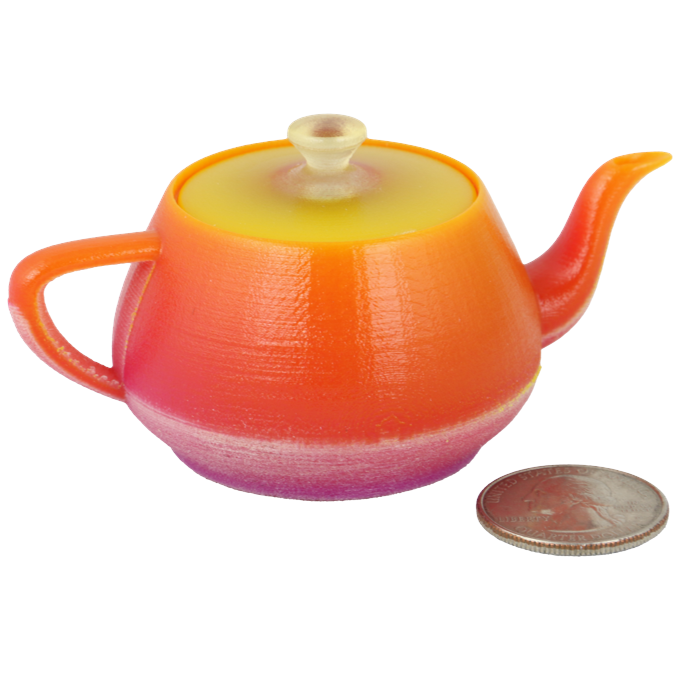Graded lattice with soft/rigid regions. (IMAGE: University of Colorado Boulder)
In an age where the DMCA reigns and it seems as though there’s an app for everything and everything has an app, it’s easy to forget that open source software still exists. More importantly, it’s still the basis for numerous useful tools for engineers working with additive manufacturing (AM). And now there’s one more.
Developed in the Matter Assembly Computation Lab at the University of Colorado Boulder, OpenVCAD is a software package that’s designed to help AM engineers design multi-material 3D printed objects. More specifically, it’s built to make gradient design easier.
“There’s certainly a history of multi-material design study and practice that existed well before OpenVCAD,” said assistant professor Robert MacCurdy, in a press release. “But we believe the overhead of writing specific code for specific projects every single time prevents engineers from doing as much design as they could. With OpenVCAD, we’re doing all of that work once—and doing it really well—so that people have built-in infrastructure to represent these spatially varying multi-material designs.”
Charles Wade, the PhD student who created OpenVCAD, said his aim was to provide design engineers with a set of tools that would make it easier to build the complex functions necessary for multi-material 3D prints.

“This is the first multi-material, code-based design tool that is widely available,” Wade said in the same release. “It allows for good complexity when printing objects, it’s accessible and it’s intuitive to write and design. Unlike traditional CAD software, where you’re forced to sketch everything out for each change and you cannot represent graded materials, our tool allows users to change one small variable and watch the whole design update in an easy way.”
According to its creators, OpenVCAD enabled engineers in MacCurdy’s lab to design an object consisting of five different materials. It’s equipped with a Python implementation that enables users to import the researcher’s repository and get started immediately.
“We want this to be widely available to people,” Wade said in the release. “We have a growing base of external researchers from other institutions who are using this tool and we hope to enable that community to do their best work.”
Potential applications for the new tool include designing surgical planning models, flexible actuators for soft robotics and simulations of multi-material objects. The tool can also be used to apply mechanical properties to specific parts of lattice structures.
“We’re able to rely on OpenVCAD’s core capabilities to represent multi-material objects in a bunch of different domains,” said MacCurdy in the release. “But there is a lot more coming in certain areas that we are excited about and we’re really hoping this approach to multi-material design takes off.”
The post New open-source tool for multi-material DfAM appeared first on Engineering.com.

